Facial scarification was a practice in Nigeria.
Families and communities carved deep cuts on children, usually on both cheeks or the forehead, primarily as a mark of identity.
Look: Nigeria: at least 80 dead in the explosion of a clandestine oil refinery
The markings also contained stories of pain, reincarnation, and beauty.
This practice, however, has been fading since a federal law banned all forms of child mutilation in 2003.
So those who currently wear facial markings are the latest generation: their stripes are as varied as the many ethnic groups in Nigeria.
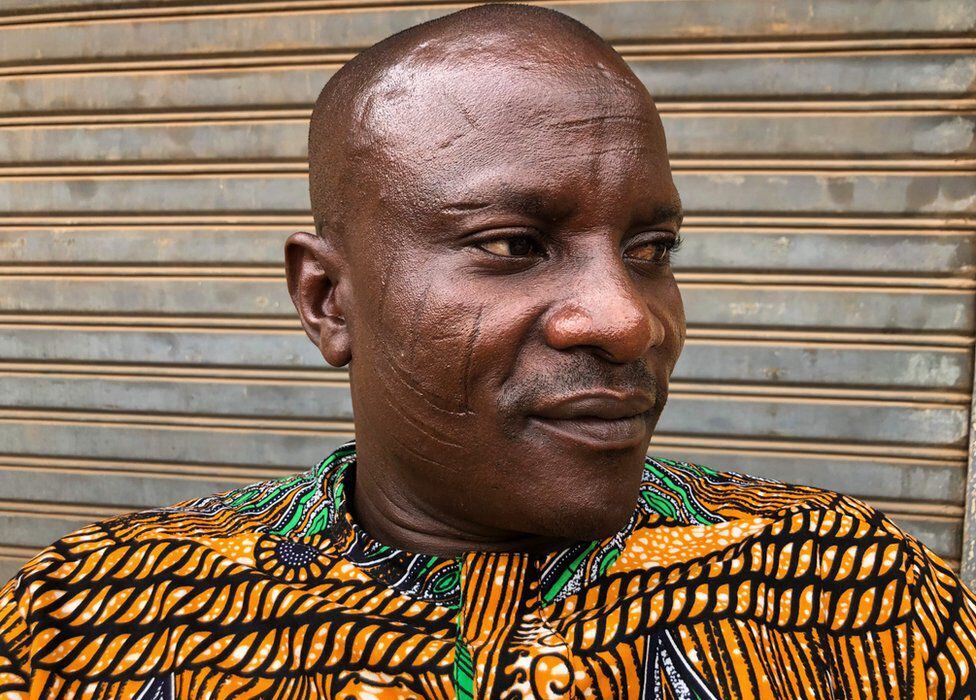
The 15 cuts on Inaolaji Akeem’s face (above) identify him as someone from the kingdom of Owu, in Ogun state, in southwestern Nigeria.
Akeem was born into royalty, so he has long stripes on his face.
“It’s like a soccer jersey,” he jokes, adding that these made him popular in the local market.
Seriously, Akeem says that he considers scars to be sacred and doesn’t think people should mark their face just to make it more beautiful.
This need for identification through facial markings was also strong in northern Nigeria, especially among the Gobir people of Sokoto state.
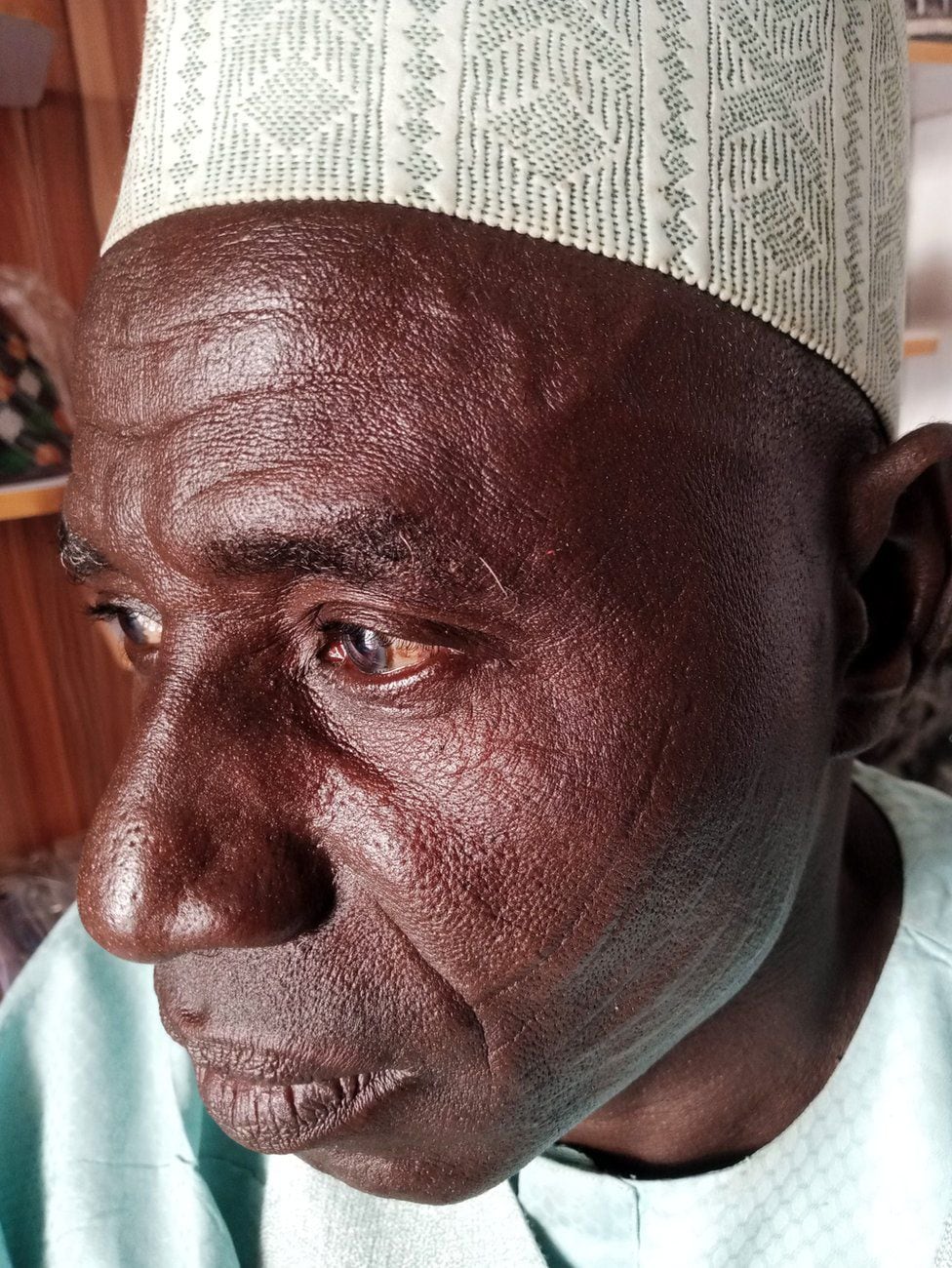
Ibrahim Makkuwana’s ancestors, Gubur herdsmen in present-day Sokoto, had no facial markings. But, he said, as they moved in search of farmland, “they fought many battles and conquered many places.”
They then decided to make distinctive markings on their cheeks, “similar to those their animals had, which would help them identify their relatives during battles,” says Makkuwana.
“That was the origin of our brands,” he tells the BBC.
But there is also a distinction between the gobirawas.
The ones with six scars on one cheek and seven on the other have both royal parents. The ones with six marks on both sides only have their mothers from the royal family.
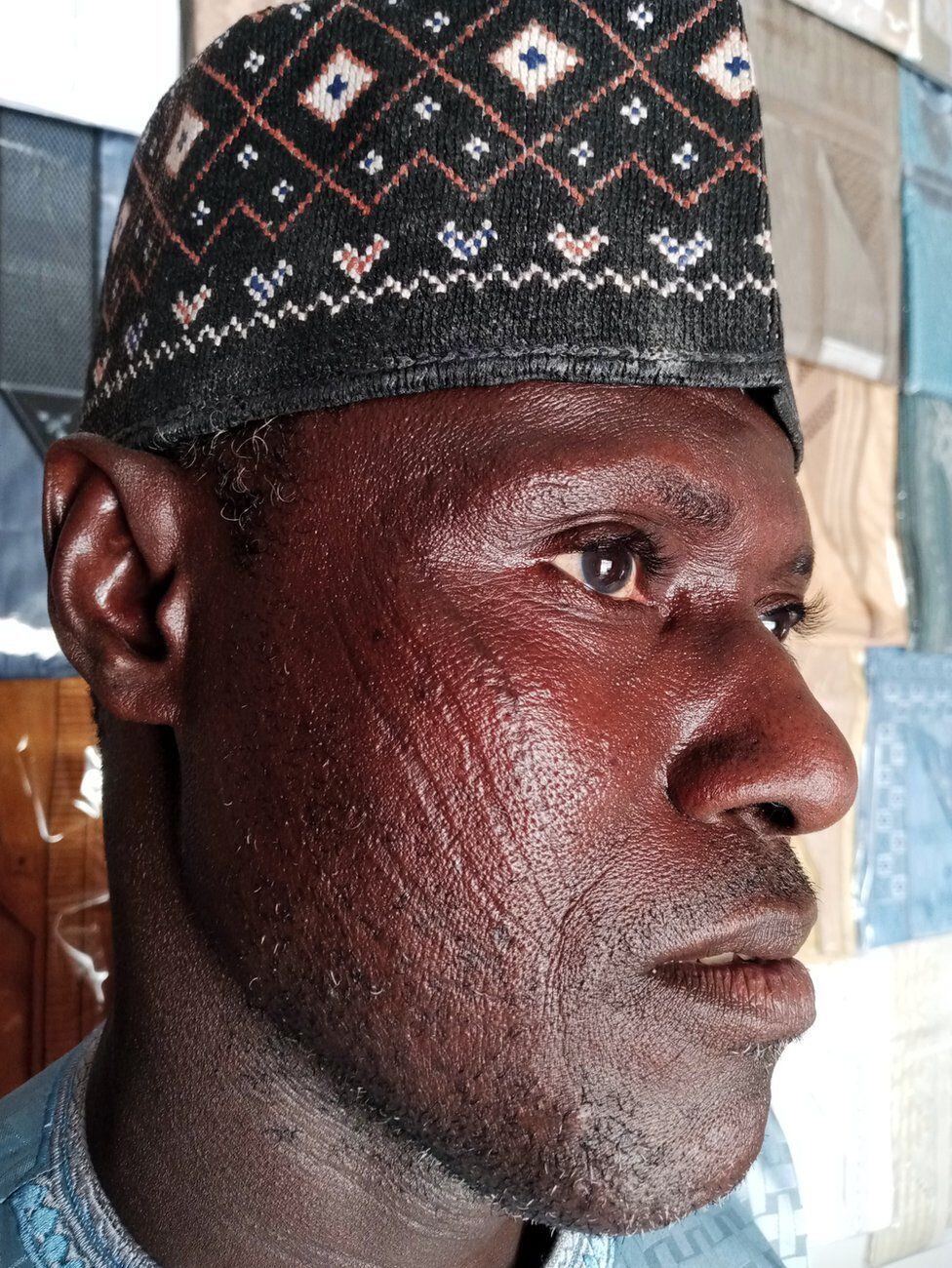
Then there are the sons of butchers, with nine scars on one side and 11 on the other, while those with five and six marks on each side trace their lineage back to hunters.
As for the fishermen, they have distinctive markings drawn up to their ears.
Meanwhile, among the Yoruba and Igbo of southern Nigeria, some marks are linked to life or death.
There was a belief in their communities that some children were destined to die before puberty.
Known as Abiku and Ogbanje respectively by the two ethnic groups, the Yoruba believed that these children belonged to a coven of demons who lived in large iroko and baobab trees.
It was common for women to lose several children at a young age in succession, and it was thought that it was the same child, reappearing again and again to haunt its mother.
These children were then marked to make them unrecognizable to their fellow spirits, to keep them alive.
It is now known that many of these infant deaths were caused by sickle cell anemia, a common inherited disorder among blacks.
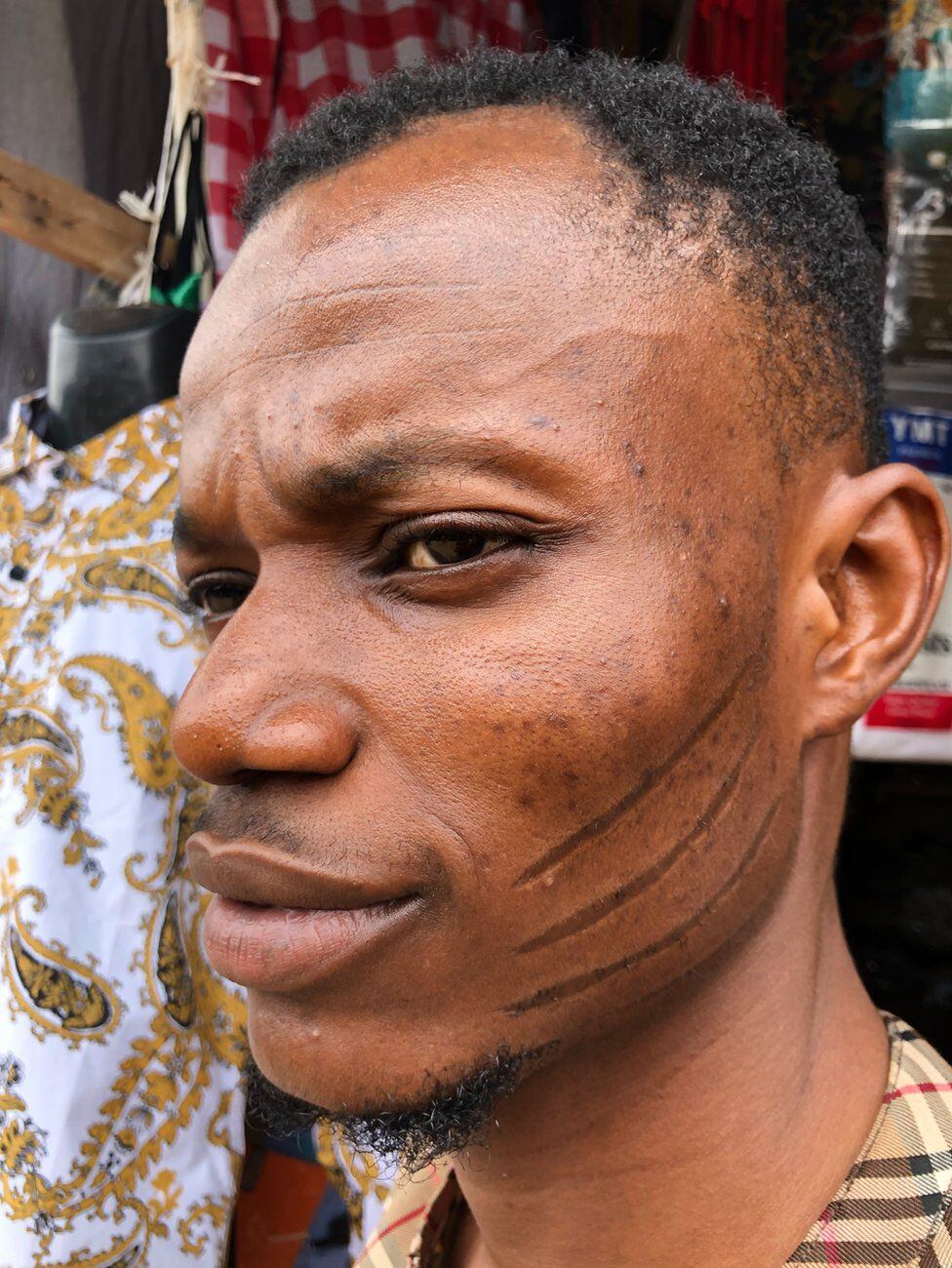
Yakub Lawal in Ibadan, in the southwest of Oyo state, was marked as Abiku.
“This is not my first stay on Earth, I’ve been here before,” he says.
“I died three times, and on my fourth return they made these marks on me to prevent me from going back to the spirit world,” he adds.
Closely related to the stories of Abiku and Ogbanje are those whose markings are in memory of a deceased relative or one who has been “reborn”.

The four horizontal and three vertical marks on Olawale Fatunbi were made by her grandmother, who said that she was a reincarnation of her late husband, who had those facial scars.
But Fatunbi wishes he didn’t.
“I don’t really like them because I see it as child abuse, but it’s our culture,” he says.
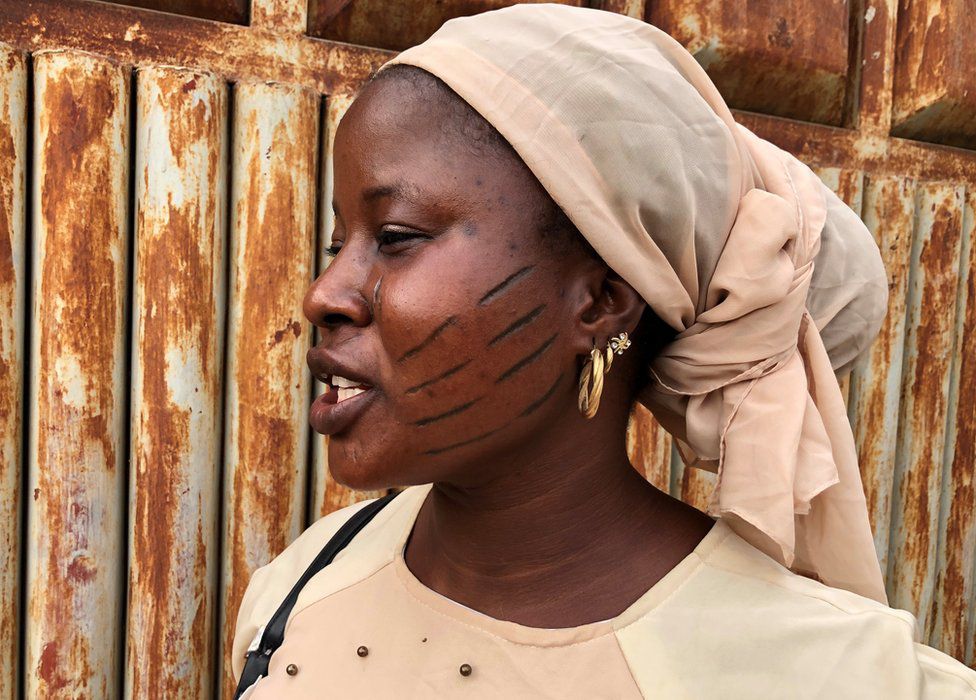
With 16 marks on her face, Khafiat Adeleke is hard to miss. Even harder to miss is the huge sign on his store in Ibadan, which reads Mejo Mejo (Eight Eight), to represent the scars on his cheeks.
“People call me Mejo Mejo from here to Lagos.”
“My grandmother made them for me because I am an only child,” she says.
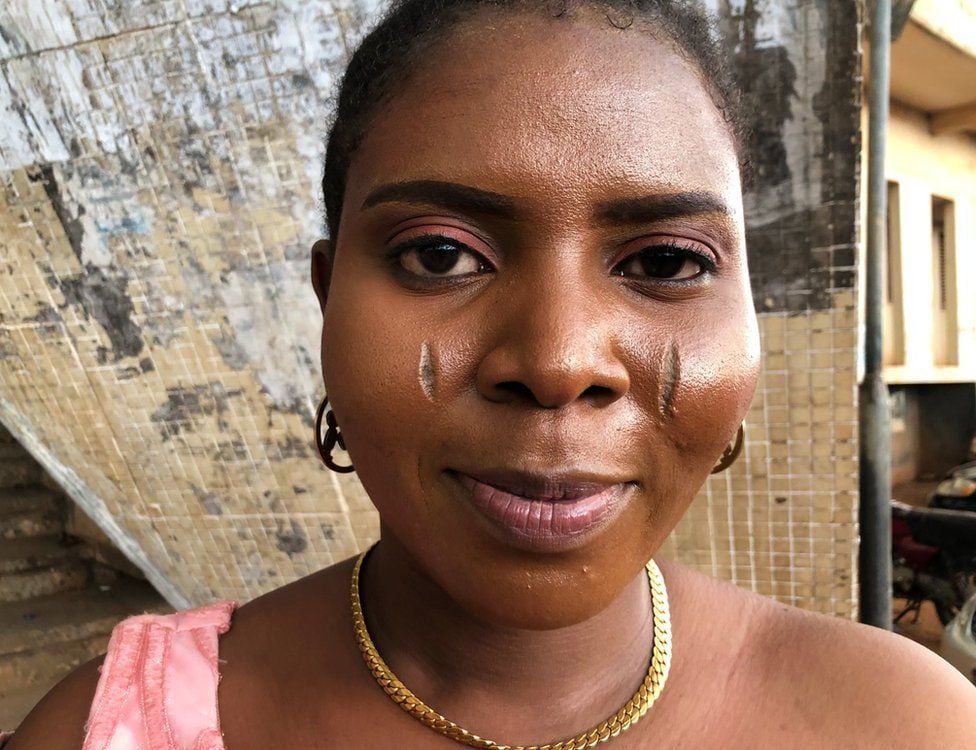
Some scars are made for cosmetic reasons.
Foluke Akinyemi was marked as a child. She had a deep incision made on each cheek of hers supervised by her father at the hands of a local circumciser, who also did facial scarring.
“My father made the decision to give me some marks for the sake of doing it and because he thought it was beautiful.”
“It makes me stand out and I thank my parents for making them for me,” she says.
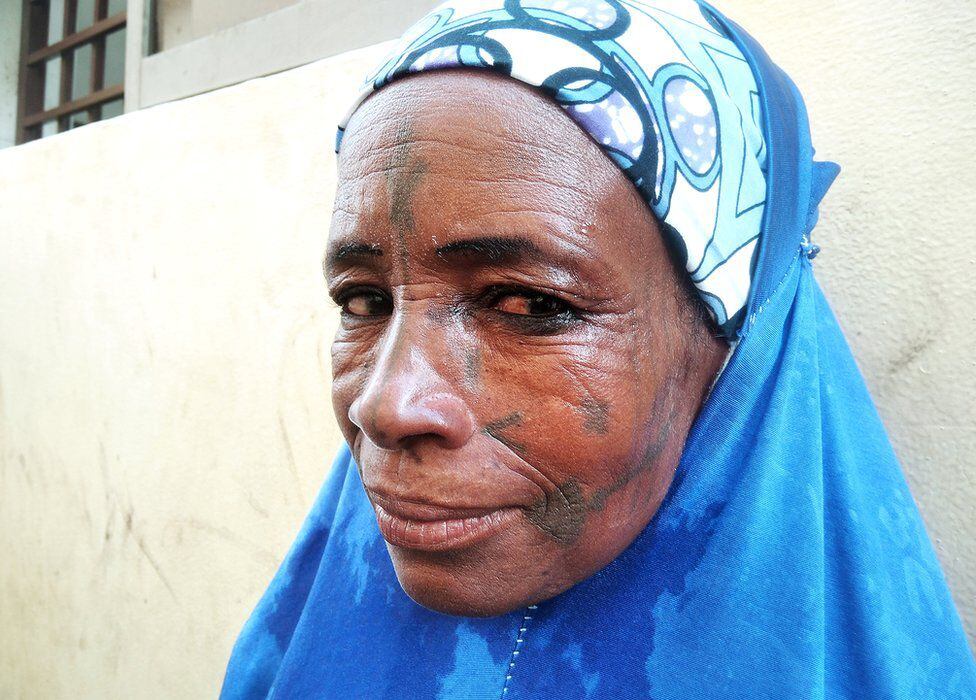
Akinyemi’s story is similar to that of Ramatu Ishyaku from Bauchi, northeastern Nigeria, who has small whisker-like lacerations on both sides of his mouth.
“It’s because they’re beautiful,” he says, adding that he also got his face tattooed around the same time.
As a child, mustache markings and tattoos were popular in her village and she and her friends would go to the local barber to get them done, she adds.
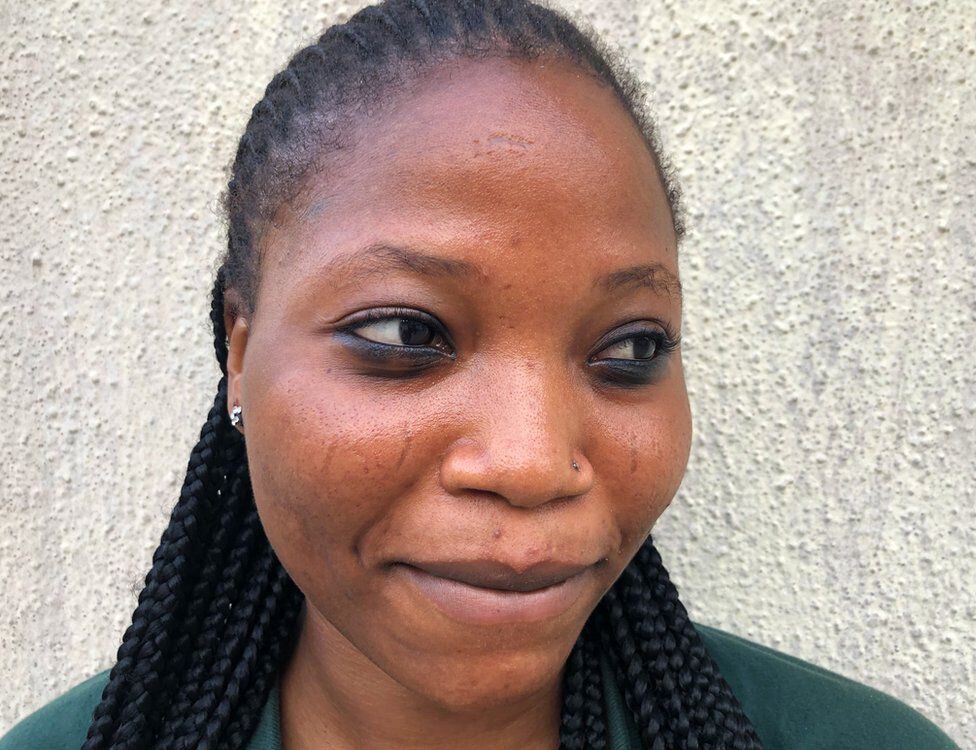
The marks on Taiwo’s face are now fading, but the memory of why she was marked still lingers.
When her twin sister died within weeks of her birth, Taiwo fell ill and a traditional healer recommended marking her face to prevent her from bonding with her twin.
She got better within days of the scarification, she says, but that hasn’t made her love the marks on her face.
“It makes you look different from anyone else, I’d rather not have any marks on my face,” he says.

There are also those like Murtala Mohammed in Abuja who don’t know the story behind their brands.
“Almost everyone in my village in Niger state had one, so I never bothered to ask,” he says.
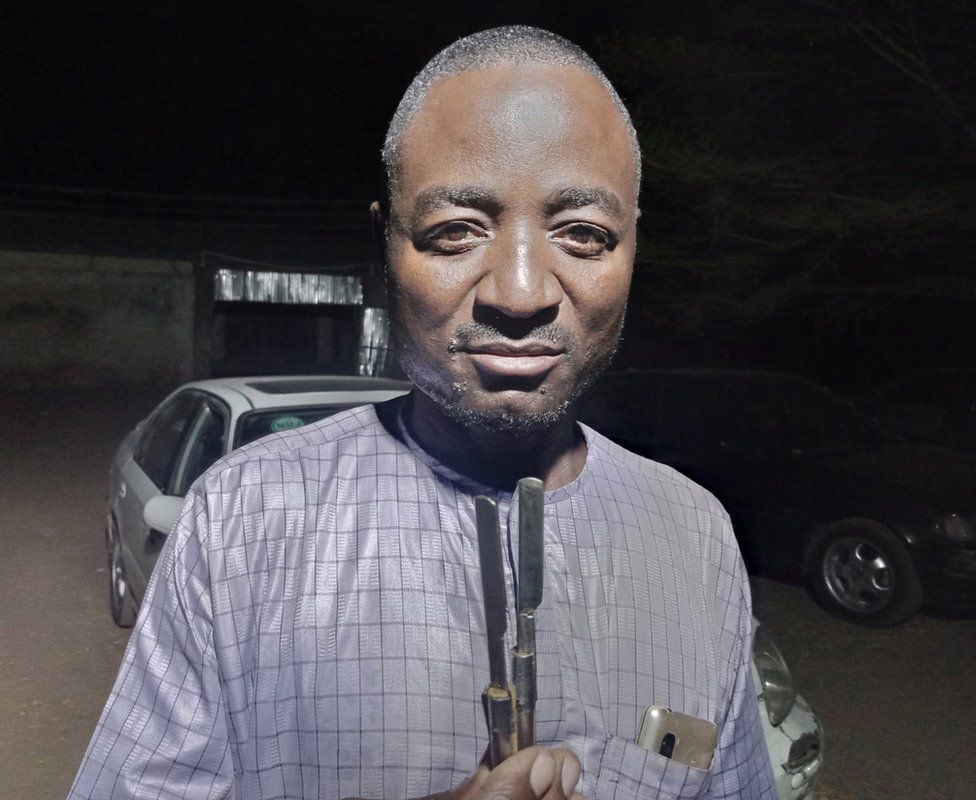

Facial markings were made by local circumcisers and hairdressers like Umar Wanzam, using sharp blades.
He describes them as a painful experience performed without anesthesia.
Many of those, like Akeem, who were scarred as children agree that it was the right thing to stop facial scarification.
He did not pass the tradition on to his children even before it was banned.
“I love the brands, but they belong to a different era,” he says.
All images are subject to copyright.
Source: Elcomercio
I, Ronald Payne, am a journalist and author who dedicated his life to telling the stories that need to be said. I have over 7 years of experience as a reporter and editor, covering everything from politics to business to crime.

:quality(75)/cloudfront-us-east-1.images.arcpublishing.com/elcomercio/GE4DANRNGA3C2MJSKQYDAORRHA.jpg)





